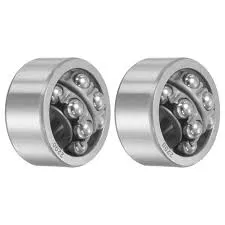
Dec . 03, 2024 18:33 Back to list
bearing nj 312
Understanding Bearing NJ 312 A Deep Dive into an Essential Component
In the world of machinery and engineering, the importance of bearings cannot be overstated. Among the various types of bearings, the NJ 312 stands out as a crucial element for many applications. This article aims to explore the features, significance, applications, and maintenance of the NJ 312 bearing, shedding light on why it is indispensable in various industrial sectors.
What is NJ 312 Bearing?
The NJ 312 is a type of cylindrical roller bearing designed to support radial loads. Specifically, it belongs to a family of bearings characterized by the designations NJ, which indicates that it has a double row of rollers and is capable of accommodating axial loads in one direction. The 312 part of the designation pertains to the specific dimensions and characteristics of the bearing, which includes an inner diameter of 60 mm, an outer diameter of 130 mm, and a width of 31 mm. These specifications make the NJ 312 bearing suitable for high-load applications where durability and reliability are paramount.
Features of NJ 312 Bearing
One of the primary features of the NJ 312 bearing is its robust construction. It often comes with a steel cage, which holds the rollers in place and ensures smooth operation. The use of high-quality materials, such as high-carbon chromium steel, contributes to its strength, wear resistance, and operational longevity. Furthermore, NJ 312 bearings are designed to minimize friction, which enhances their performance and reduces energy consumption, making them economically viable for industrial applications.
The NJ 312 bearing is also designed with a high load-carrying capacity. Its cylindrical rollers distribute loads evenly, allowing for efficient handling of heavy radial loads, while also being able to accommodate some axial loads. This unique combination of capabilities makes the NJ 312 a versatile choice for numerous applications across different industries.
Applications of NJ 312 Bearing
bearing nj 312

Due to its design and features, the NJ 312 bearing finds its application in a wide range of industries. It is commonly used in electric motors, gearboxes, and automotive applications, such as crankshafts and transmission systems. Its ability to support both radial and axial loads makes it particularly useful in applications where support from multiple directions is necessary.
Additionally, the NJ 312 is prevalent in the manufacturing and processing industries. For instance, it is often used in equipment that involves rotation, such as conveyor systems, pumps, and compressors. Its reliability under demanding conditions ensures that machinery operates smoothly and reduces downtime, which is crucial for maintaining productivity in any industrial setting.
Maintenance and Longevity
To ensure that NJ 312 bearings perform at their best, regular maintenance is essential. This typically includes routine inspections and lubrication to prevent overheating and excessive wear. Proper lubrication reduces friction between the roller surfaces, which not only prolongs the lifespan of the bearing but also enhances its overall efficiency.
End users should also be aware of the signs of wear and potential failure. Unusual noises, vibrations, or changes in temperature can signify that the bearing is not functioning correctly. Addressing these issues promptly can prevent further damage to the bearing and surrounding machinery.
Conclusion
The NJ 312 bearing plays a fundamental role in modern machinery and engineering applications. Its robust construction, ability to handle heavy loads, and versatility make it an essential component across various industries. By understanding its features, applications, and maintenance requirements, engineers and technicians can ensure optimal performance and longevity of the NJ 312 bearing. As industries continue to evolve, the significance of reliable components like the NJ 312 will remain paramount in achieving efficient and effective machinery operation.
Latest news
-
Grooved Ball Bearing Design and Functionality
NewsJun.04,2025
-
Concrete Mixer Bearing Load Capacity Testing
NewsJun.04,2025
-
6004 Bearing Dimensions in Robotic Joint Designs
NewsJun.04,2025
-
Advantages of Single-Row Deep Groove Ball Bearings
NewsJun.04,2025
-
Applications of Deep Groove Ball Bearings in Automotive Systems
NewsJun.04,2025
-
Innovations in Bearing Pressing Machine Design
NewsJun.04,2025
